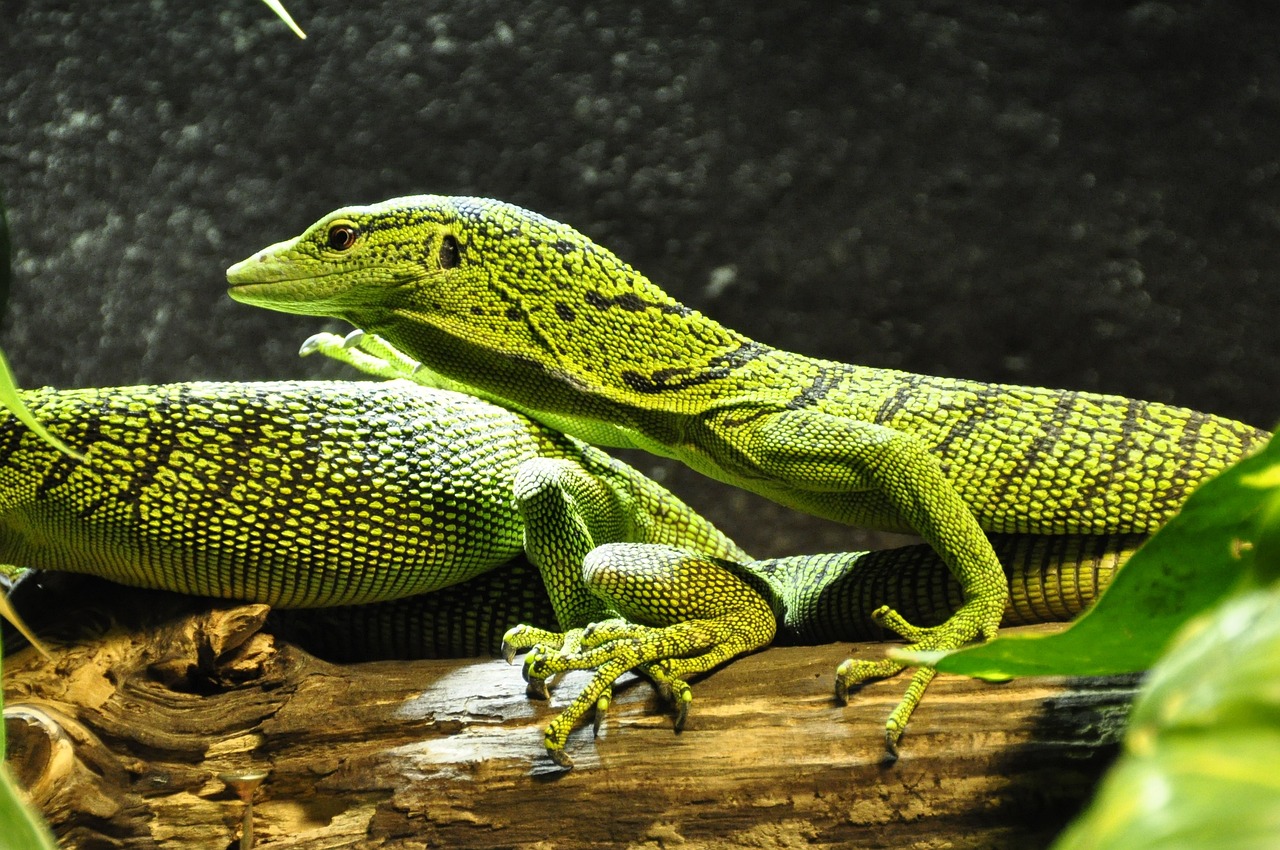We use cookies to make your experience better. To comply with the new e-Privacy directive, we need to ask for your consent to set the cookies. Learn more.
Monitor lizards: The right UV lighting - A guide for terrarium owners


The right UV lighting for monitor lizards: A guide for terrarium owners
Monitor lizards are fascinating reptiles that can be kept in terrariums and require a special environment to stay healthy and happy. One of the most important components for the well-being of monitor lizards is the right UV lighting. In this guide, we will recommend the best terrarium lights for monitor lizards and why they are so crucial.
Why is UV lighting important for monitor lizards?
Monitor lizards are cold-blooded reptiles that spend a lot of time in the sun in the wild. UV radiation from the sun is crucial for the production of vitamin D3 in the skin of monitor lizards. This vitamin is in turn important for the absorption of calcium from food and contributes to the prevention of bone softening and rickets. Modern UV lamps (metal halide lamps) provide everything for optimal vitamin D3 synthesis: UVB radiation, heat and very bright visible light.
The best terrarium lamps for monitor lizards: UV metal halide lamps
The most effective lamps for supplying UV to monitor lizards are UV metal halide lamps. These lamps emit both UVB and UVA rays, which are crucial for monitor lizard health. UV metal halide lamps are available in different strengths depending on the specific needs of your monitor lizards and the size of the terrarium. In addition, these lamps emit heat and extremely bright visible light.
Electronic ballasts: a must for UV metal halide lamps
Due to their technology, UV metal halide lamps require so-called electronic ballasts. These devices stabilize the current flow to the lamp and ensure a uniform and efficient output. They also start the lamp with a very strong ignition current (up to 5000 volts) and then regulate the output downwards.
Specific needs of monitor lizards: white-throated monitor lizards and desert monitor lizards
The two most common monitor species kept in private terrariums are the white-throated monitor (Varanus albigularis) and the desert monitor (Varanus exanthematicus).
1. white-throated monitor (Varanus albigularis): This species originates from the arid regions of South Africa and is popular with terrarium enthusiasts due to its relatively small size and calm temperament. White-throated monitor lizards require a warm environment and sufficient UV radiation to remain healthy.
2. desert monitor lizard (Varanus exanthematicus): The desert monitor, also known as the sand monitor, is native to the arid regions of Africa. This species is also popular with terrarium keepers as it is relatively easy to care for and adapts well to life in captivity. Desert monitor lizards require a hot and dry environment as well as adequate UV exposure.
Both species have specific requirements for their terrarium husbandry, including proper temperature, humidity and UV lighting. By considering these needs and creating a suitable environment, terrarium owners can ensure that their monitor lizards are healthy and happy. We recommend a 70 watt UV lamp with a distance of approximately 30cm for both monitor species. Larger animals may also require a 150 watt lamp with a distance of 40-50cm. For young animals, a 35 watt lamp at a distance of 30 cm is often sufficient.
The importance of the right temperature and UV exposure
Adequate temperature and UV exposure are crucial for the well-being and health of monitor lizards. Ensure that the lamps are positioned so that they provide even heat and UV exposure in the terrarium. Closely monitor the behavior of your monitor lizards to ensure they are receiving the right amount of heat and UV radiation.
Overall, proper UV lighting is one of the most important aspects of keeping monitor lizards in a terrarium. By using UV metal halide lamps in conjunction with electronic ballasts, terrarium owners can ensure that their monitor lizards receive the UV they need to stay healthy and active. Be sure to consider the specific needs of your monitor lizards and adjust the lighting accordingly to create an optimal environment.



